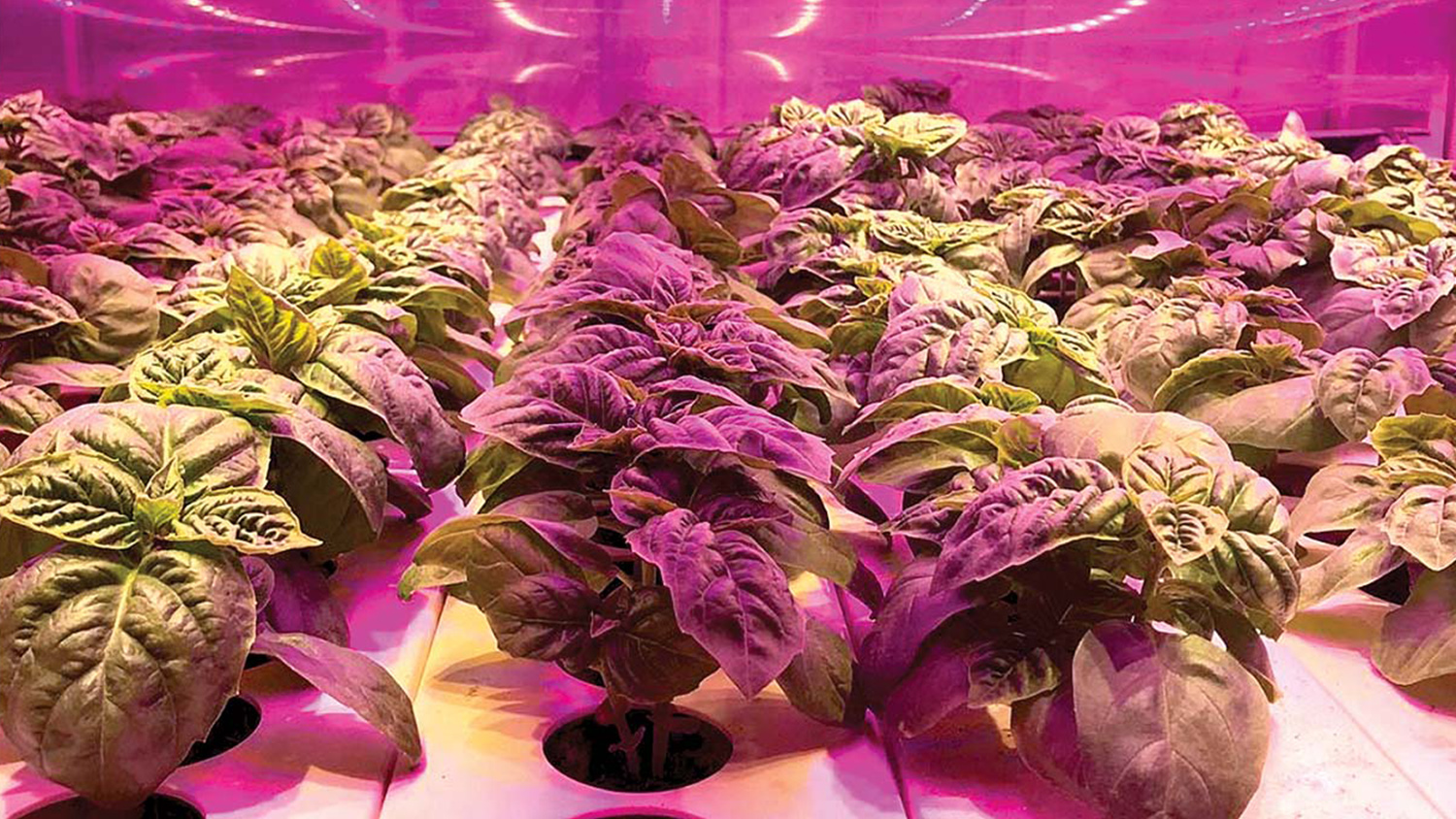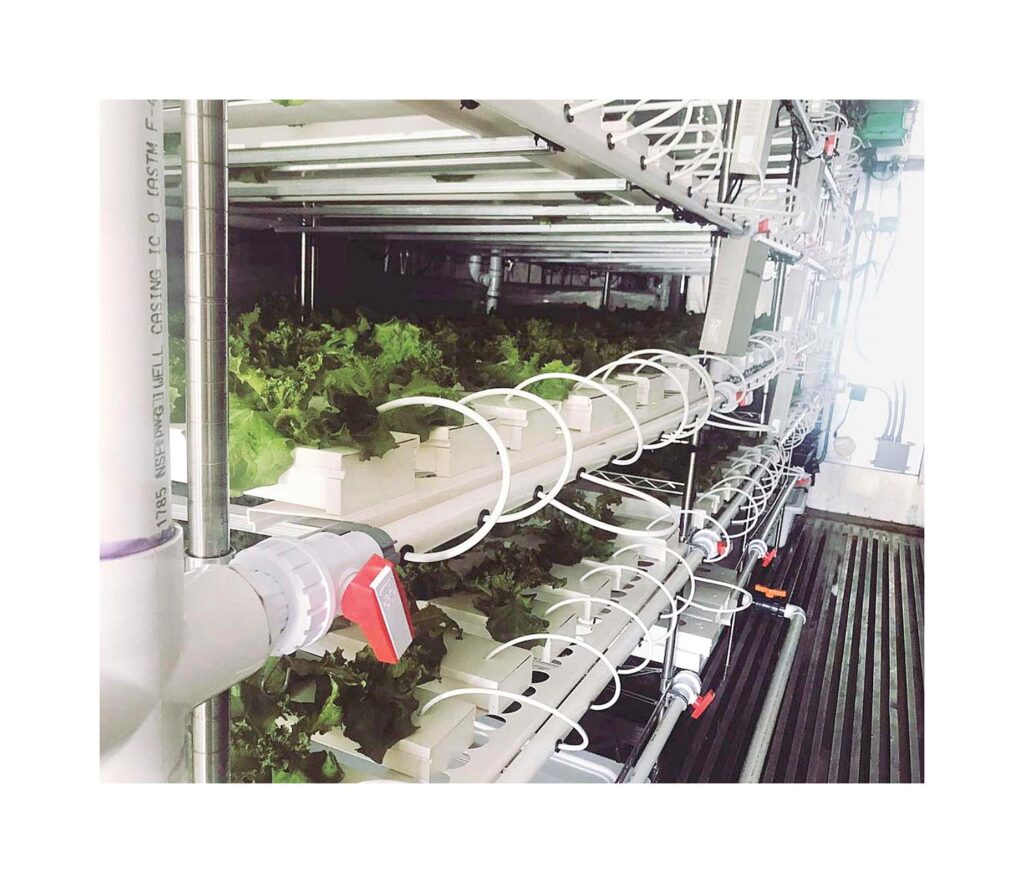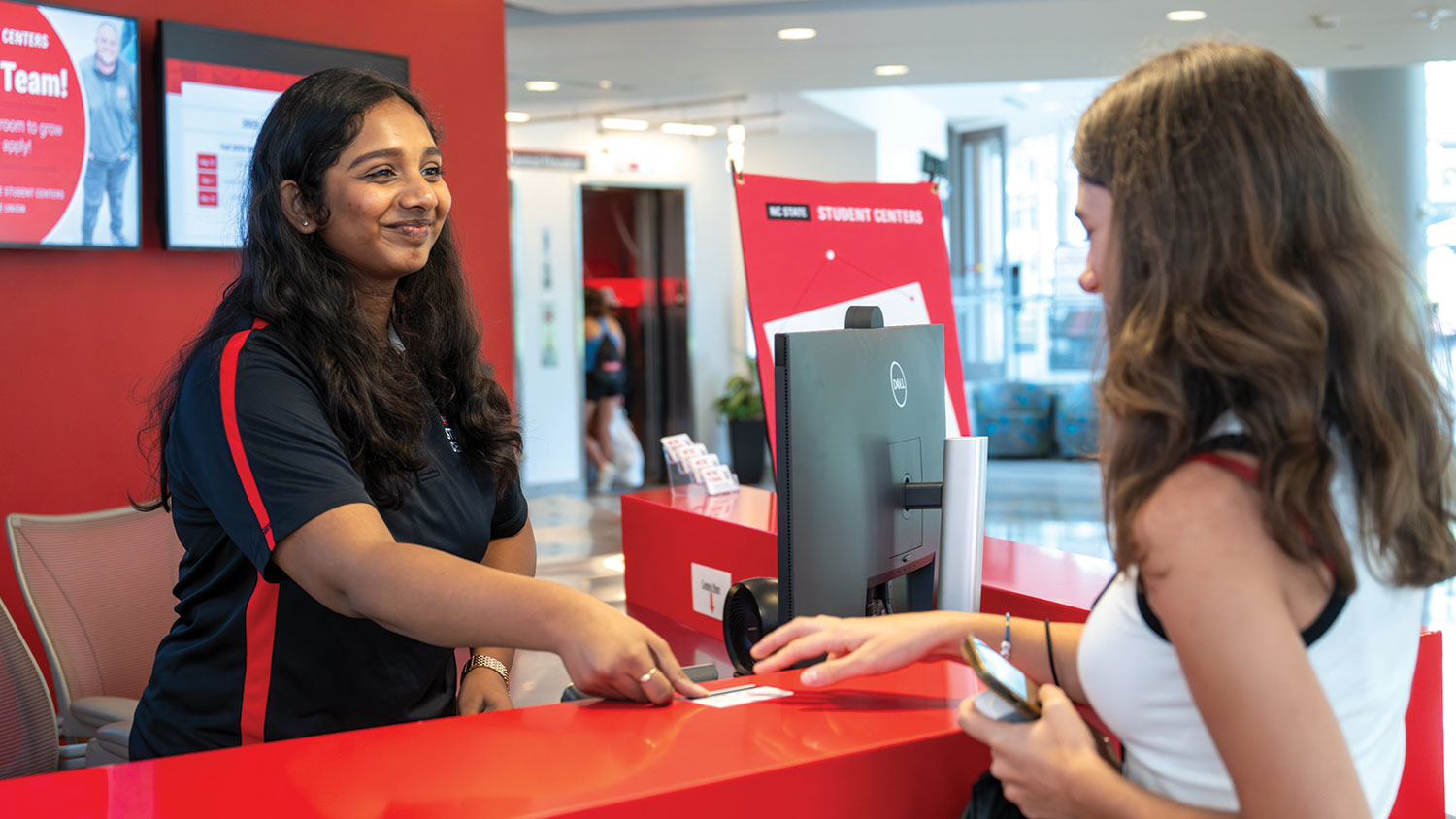Growing Up
Vertical Farms Club gives students the chance to explore a new form of agriculture.

By Erin McPherson
Matthew Barker, a junior horticulture science major from Browns Summit, N.C., knows the landscape of agriculture is changing — literally. As populations continue to boom globally, contributing to a scarcity of resources like water and cultivable land, scientists and farmers are looking for solutions to help them grow more crops.
Barker and others are turning to something called vertical farming, in which quick-growing plants can be grown indoors and stacked vertically on shelves. Unlike greenhouses, which rely on sunlight to maintain consistent plant production, vertical farms provide an additional level of control over the environment. Using technology, farmers can maintain constant temperatures, humidity, and light — and optimize those conditions for plant growth.
“When we change the conditions inside the lab, we can quickly see the impact on the plants,” says Ricardo Hernandez, an assistant professor of horticulture science and adviser to the NC State Vertical Farms Club.
Barker is the club’s president, and he thinks vertical farming will grow as the push continues for more food to be produced per acre of farmland. “Because the systems are so automated,” he says, “we can produce compact crops like kale and leafy greens so much faster than traditional farms — and with fewer pesticides and fertilizers.”

The club gives students an opportunity to contribute to the care, upkeep and continued improvement of a newly retrofitted, 32-square-foot shipping container equipped with some of the latest technologies and innovations in container farming. The container is located at the Horticulture Field Lab in west Raleigh adjacent to the JC Raulston Arboretum.
Students are given a project at the start of each semester to identify ideal growing conditions for plants such as lettuce, microgreens or tomatoes, and develop best growing practices. This includes the installation of LED lighting systems; the implementation of irrigation, nutrient supply, and air movement systems; and automating the lab for remote monitoring so students can adjust conditions and track plant growth through their computers.
Barker says research opportunities with the club have attracted students across disciplines, including those interested in agriculture and business, as well as data collection and statistics. “This is the perfect opportunity,” Barker says, “for me to learn more about how technology can increase crop yields with less input.”
- Categories:


